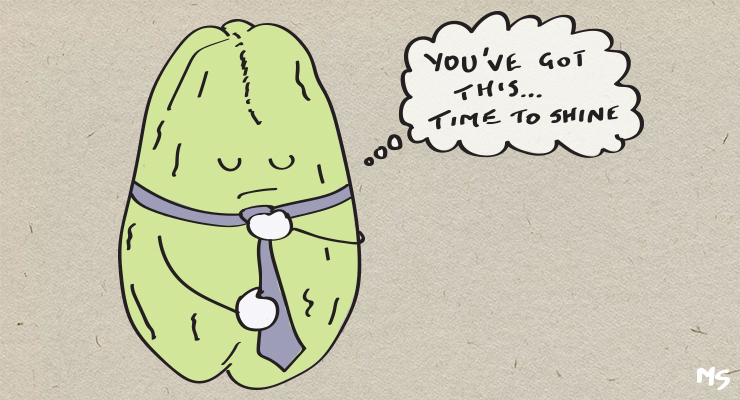
First, the image of an iceberg lettuce that cost $11.99 went viral. Then KFC announced it would be using a blend of lettuce and cabbage in its burgers due to supply issues across the country. The prices of vegetables are soaring right now.
And look, there’s been a lot of focus on iceberg lettuce, but let’s be clear about this: iceberg is the worst of all the lettuces — nay, all the vegetables. And we’ve got more serious things to worry about. Broccoli! Beans! Silverbeet! Zucchini! (Zucchini! At $11 a kilo?!).
Why are vegetable prices skyrocketing?
A mixture of things is causing the price hike, but the main culprits are floods, war and a global pandemic. What a time to be alive.
The recent floods in northern NSW and Queensland ruined crops. And at this time of the year, this region, the Lockyer Valley, is where much of Victoria and NSW’s fresh produce comes from. On top of this, Russia’s invasion of Ukraine and lockdowns in China have created massive price hikes for farmers. Things like fuel and fertiliser have gone up, making vegetables more expensive to produce and transport.
Of course, in some areas of remote Australia, staggering prices for groceries are the norm. Photos that were submitted to a parliamentary inquiry into food security and prices in Indigenous communities in 2020 showed a three-litre container of milk for $7.30, among other outrageous prices. But for most of country, paying this much for vegies is new — in fact, Michael Harvey, a senior analyst at Rabobank, told Guardian Australia that Australians had seen the highest price growth in 10 years.
How much are vegetables costing where you are?
We want to document this moment in time around the country. Take a photo of the most expensive vegetable at your local supermarket — or one where the price just really shocked you — and send it to us at boss@crikey.com.au with your name, the name of your town, and the supermarket.
And if you’re a savvy shopper or crafty in the kitchen, please send us any tips on obtaining cheaper vegies, or recipes for cooking with the produce that you can afford without the assistance of a loan shark.
Go on, lettuce see the jokes
If you can’t laugh, you’ll cry. So to stop the tears, here are a few of the best and worst jokes about these price hikes.
In a classic example of law enforcement types trying to be funny but just coming off kind of weird, Queensland Police publicly punned about lettuce prices.
The “millennials are poor because they keep living it up” joke — one that will never die — reared its ugly head.
That would be way funnier if, you know, it didn’t hurt so much.
So what can you do?
First off, not all vegetables are quite so pricey. Coles chief operating officer Matt Swindells told Nine’s Today program that there are “other products across produce that are in abundance”, such as pumpkins, avocados (!), Asian greens such as bok choy and pak choi, carrots (ah, the good old carrot) and cauliflower.
Secondly, shop more local. While the rain and a colder-than-usual start to winter have affected produce across much of Australia, shopping at local farmers’ markets or subscribing to a locally-grown vegetable box might lighten the costs, depending on where you live.
Of course, not everyone is able to do that — so let’s gather those creative end-of-times food recipes at boss@crikey.com.au and help your fellow Crikey readers out!








There was a time , not so long ago, when we wouldn’t dream of finding zucchini, tomatoes or any other summer veg at this time of year. It’s when we used to survive on root vegetables and whatever greens we could find. Try some hearty soups like minestrone. Tinned tomatoes and frozen peas solve a lot of problems.
Also, we can grow things like silver beet, spinach, parsley in very small spaces – even pots.
Some genius on the news this week made the outlandish suggestion that people should eat locally grown fruit & veg. when it is in season.
If you have a garden with a patch of sunshine and space for two compost bins, you can grow leafy greens.
We grow iceberg lettuce, rocket and spinach in a 3m area.
I like iceberg lettuce.
Those of us with an interest in healthy food have seen this crisis coming for sometime, especially with the onset of climate change and the overuse of herbicides and pesticides in growing areas. Many other jurisdictions have attempted to fix this problem by a massive increase in growing food in suburban areas, eg Cuba and all of the Scandinavian countries.
I have suggested to our local state MP that we utilise some of the open spaces for growing vegetables on a social enterprise system, but no luck to date. We have started several community gardens in Sandgate and have shown how easy it is to grow significant quantities of chemical free veg in the suburbs. Areas like the Deagon Racecourse where there is already a 3000m2 community garden would accommodate a 12-15000m2 market garden along with a composting facility quite easily. All it requires is political will and we can all continue to enjoy healthier, chemical free food, grown down the road.
The Skandiwegians can do this because of the geography, climate and social compact.
The 1970s London farm garden movement collapsed for ignoring the salient point of a toxic environment
.
Veggies grown in Sydney (and I assume Melbourne and other large industrialised conurbations) are imbued with two centuries of polluted soil and the ever present aerial sludge of smog thanks to millions of cars in a high sided basin.
When the Sydney MWSDB (of yore) needed to expand the sewer system there was a brief enthusiasm to pipe it through the Sandstone Curtain to water and enrich the arid lands west, all that lovely nitrogenous matter.
However, it was quickly discovered that this would be a disaster, not because of faecal matter but industrial contamination.
The rapid expansion of the dormitory burbs in the 60/70s was without due/any consideration of infrastructure – it is said that Tiberius found a Rome of clay and made it one of marble whereas Great Gough found dunnymen in western Sydney and made them redundant with mass sewer developments.
Unfortunately, the usual corrupt pollies, chancers & bean counters quickly did what they always do, cut corners and make things worse for the future.
In this case it was encouraging the move of factories to greenfield sites and allowing them to diuscharge whatever into the sewers.
The MWSDB then came up with the only other option, extend the marine outfalls so that swimming at Bondi was no longer just gpoing through the motions…except for tide, too much or too little rain, tech glitches, strikes & malevolence.
It was sold to the public as ‘contributing to the marine nutrition cycle‘ which must be reassuring to all those clamouring at the fishmarkets for Xmas seafood.
I am amused at people posting photos of expensive iceberg lettuce, given the cavalier disregard with which it is usually treated. I always feel like I’m being sneered at by foodies when I buy it (I like iceberg lettuce. It’s a good honest lettuce).
I see plenty of reasonably priced veggies in the greengrocers. Buying in season is always best and the seasonal foods don’t seem to be any more expensive than usual. Also, what is wrong with buying frozen? Frozen veggies are snap frozen at picking and usually better than fresh veggies which have been in the fridge for a while (although, of course, frozen iceberg lettuce is not a thing and this is good). I haven’t noticed any appreciable price hike in frozen food.
Frozen is an excellent idea. Apparently it’s just as nutritious as fresh, and there’s no waste, (at least by the consumer) because you only use the amount you need at any one time.
VJ, love your description of iceberg lettuce being, “a good honest lettuce”, and I absolutely agree! It’s crunchy, doesn’t get stuck between your teeth like the very fine salad greens, it’s versatile and it’s ‘bulletproof,’ i.e. stays fresh for ages.
Throw seeds on any patch of bare dirt in winter. The rain looks after things. You have to get a bit more organised at other times but if you have a bit of dirt at home or a sunny place for a pot you can take a bit of pressure off.